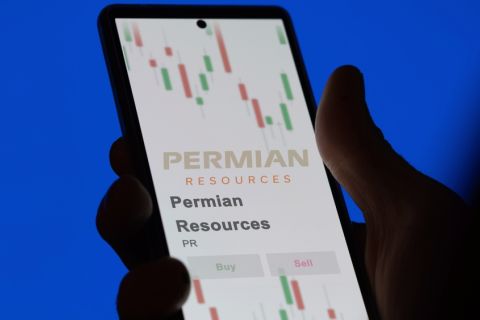The U.S. Pipeline and Hazardous Materials Safety Administration (PHMSA) has cautioned Bakken crude oil producers— and midstream operators handling it—that the play’s oil may be more flammable than first thought. The caution comes as regulators mull potential changes to railroad tank car standards.
The PHMSA safety alert was “to notify the general public, emergency responders and shippers and carriers that recent derailments and resulting fires indicate that the type of crude oil being transported from the Bakken region may be more flammable than traditional heavy crude oil,” the agency announced.
The alert went out in January following a train derailment on a BNSF Railway line outside Casselton, North Dakota, that triggered a major fire after several tank cars ruptured.
First, a westbound freight of hopper cars filled with soybeans derailed. Shortly thereafter, an eastbound crude train on an adjoining track clipped the derailed cars, triggering a second derailment and the fire. There were no injuries and damage to the surrounding rural area was minimal, although amateur videos showed large fireballs erupting from the tank cars.
It was the fourth major North American accident in six months by trains moving Bakken crude, including the July 2013 derailment in Lac-Mégantic, Québec, that resulted in 47 fatalities and extensive damage to the town near the Maine border. Service was to resume on that line in January for the first time since the incident.
“Proper characterization will identify properties that could affect the integrity of the packaging or present additional hazards, such as corrosivity, sulfur content and dissolved gas content,” PHMSA said. “These characteristics may also affect classification. PHMSA stresses to offerors the importance of appropriate classification and packing group assignment of crude oil shipments, whether the shipment is in a cargo tank, rail tank car or other mode of transportation.”
It added that light, sweet crude, such as that typical of the Bakken region, is typically assigned a packing-group category for materials with a flashpoint below 73ºF and a boiling point below 95ºF.
“This means the materials pose significant fire risk if released from the package in an accident,” it said.
U.S. regulators, including the Federal Railroad Administration (FRA), in late 2013 began examining whether Bakken crude is more risky to move by rail. About three-quarters of the oil produced in North Dakota is shipped via rail rather than pipeline.
As part of ongoing investigative efforts, PHMSA and FRA recently initiated “Operation Classification,” a compliance initiative involving unannounced inspections and testing of crude samples, to verify that materials have been properly classified and hazardous materials have been properly described.
“Preliminary testing has focused on the classification and packing group assignments that have been selected and certified by offerors of crude oil,” PHMSA said. “These tests measure some of the inherent chemical properties of the crude oil collected. Nonetheless, the agencies have found it necessary to expand the scope of their testing to measure other factors that would affect the proper characterization and classification of the materials. PHMSA expects to have final test results in the near future for the gas content, corrosivity, toxicity,flammability and certain other characteristics of the Bakken crude oil, which should more clearly inform the proper characterization of the material.”
The implications for cost and shipment of crude out of the Bakken “are likely to depend on the rulemaking” that follows, Kevin Book, managing director for research at ClearView Energy Partners LLC, said in a statement following PHMSA’s announcement. Any sort of new U.S. standards for tank cars should come in “weeks, not months,” said U.S. Sen. John Hoeven (RNorth Dakota), following a January meeting with U.S. Transportation Secretary Anthony Foxx.
Recommended Reading
SilverBow Rejects Kimmeridge’s Latest Offer, ‘Sets the Record Straight’
2024-03-28 - In a letter to SilverBow shareholders, the E&P said Kimmeridge’s offer “substantially undervalues SilverBow” and that Kimmeridge’s own South Texas gas asset values are “overstated.”
Flame Acquisition Holders Approve Merger with Sable Offshore
2024-02-14 - The business combination among Flame Acquisition Corp., Sable Offshore Holdings and Sable Offshore Corp. will be renamed Sable Offshore Corp.
Greenbacker Names New CFO, Adds Heads of Infrastructure, Capital Markets
2024-02-02 - Christopher Smith will serve as Greenbacker’s new CFO, and the power and renewable energy asset manager also added positions to head its infrastructure and capital markets efforts.
TPG Adds Lebovitz as Head of Infrastructure for Climate Investing Platform
2024-02-07 - TPG Rise Climate was launched in 2021 to make investments across asset classes in climate solutions globally.
Stockholder Groups to Sell 48.5MM of Permian Resources’ Stock
2024-03-06 - A number of private equity firms will sell about 48.5 million shares of Permian Resources Corp.’s Class A common stock valued at about $764 million.





